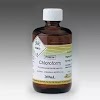PROTEIN BINDING STUDIES OF A POORLY PROTEIN BOUND DRUG
AIM:
To study the protein binding of poorly protein drug (paracetamol) by using cellophane
membrane.
MATERIALS REQUIRED:
v Paracetamol – 40mg.
v Albumin – 2%.
v Beaker
- 500ml & 50ml.
v Cellophane membrane – q.s.
v Buffer – 60 ml ( pH- 6.8)
v Pipette – 5ml.
v Test tubes
v Standard flask
UV spectroscopy
PROCEDURE:
1.Plasma protein binding was determined
on a equilibrium dialysis cell
containing two separated chamber separated by cellophane membrane.
2.Prepare the cellophane membrane by
dipping in water for about 15 min.
3.Preparation of Compartment A:
a. Prepare drug solution using buffer solution. Albumin diluted with
phosphate buffer pH – 7.4.containing the drug solution to 30ml.
b. The above solution is packed in the cellophane membrane and tie on both the sides.
4.Preparation of compartment B:
a. In a beaker, the phosphate buffer 30ml is taken, to that the cellophane
membrane containing solution A is dipped and tied.
b. Using the magnetic stirrer, the
solution is to be stirred until it reaches equilibrium.
c. The samples are withdrawn to time to
time until equilibrium attained between two compartments and equal amount of
freshly prepared buffers are replaced.
d. The samples are measured at 257nm using UV spectroscopy. The equilibrium is calculated and percentage is calculated and
reported.
REPORT:
The experiment was performed with
albumin and the drug binding efficacy to that of the proteins was studied. It
was evident that ---------mg of the drug didn’t bind to albumin and -----mg of drug is
binded to the albumin (ie)------% drug binded and --------% was free.
OUTCOME:
This experimental procedure can be applied
for other drugs too for determining the protein binding of the selected APIs in
preformulation development process.









0 Comments